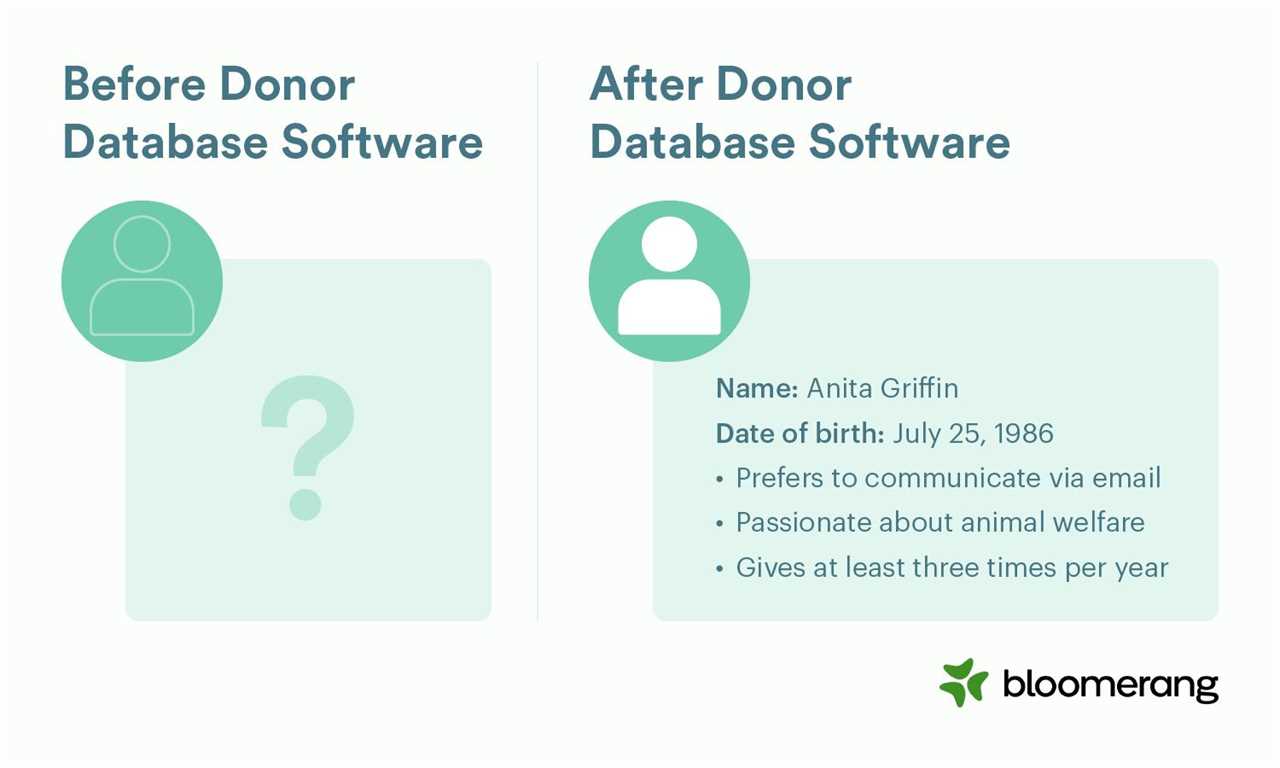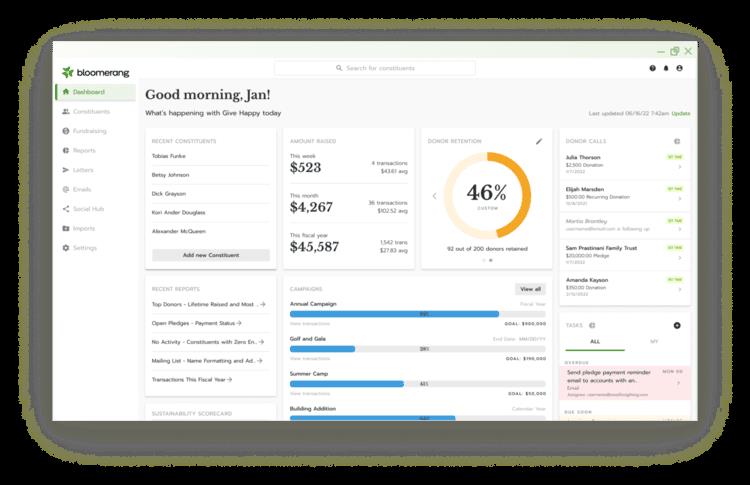When establishing your organization in your community, corporate partnerships can provide new resources, unlock a broader audience, and elevate your brand. However, finding, maintaining, and growing these partnerships requires a deliberate strategy backed by technology.
While its name might stand for “constituent relationship management,” your CRM is actually your donor database for managing relationships with all stakeholders, including corporate partners. CRMs are flexible tools that, with the right customizations and strategies, can help you organize, track, and nurture your partnerships with businesses in your area.
In this guide, we’ll explore five tips for how to use your CRM to build long-term, mutually beneficial corporate collaborations.
1. Understand and segment your partners.
All of your corporate partners have their own goals and unique contributions. Your CRM allows you to organize these relationships to ensure you make the best moves in advancing each individual partnership.
Leverage your CRM to manage these relationships by:
- Creating tags or custom fields to segment partners. Your organization works with a wide range of stakeholders, and even just the designation of “corporate partner” might be too vague since it can apply to sponsors, marketing partners, and suppliers. Create a custom field on your stakeholder profiles so you can easily label, sort, and organize your corporate partnerships.
- Tracking details. Your stakeholder profiles are your key place to record all details about your partnerships. For instance, you might make note of contract terms, partnership goals, and key contacts. For instance, here’s an example of how a CRM can upgrade a corporate sponsor’s profile:

Above all, stakeholder profiles allow you to maintain consistency in your relationships. For instance, a member of your team might start outreach to a corporate sponsor but then depart your organization for another opportunity. Instead of letting the knowledge of this relationship leave with this team member, all of the data recorded in your CRM lets the rest of your staff pick up where they left off.
2. Centralize communication.
Your CRM is a core tool for managing communication and outreach. Note each partner point of contact’s availability, communication preferences, and your organization’s past interactions with them.
To keep communication centralized and consistent, be sure to:
- Log every interaction. Whether you met them in person, talked over the phone, or exchanged emails, record the interaction in your CRM. This data allows you to gauge where each partner is in their relationship with your organization, empowering you to better time proposals and make better pitches.
- Attach documents to profiles for future reference. When getting in touch with corporate partners, it’s useful to have all relevant documentation on hand, so you can easily reference past agreements and plans. Ensure each corporate stakeholder profile has past memoranda of understanding, contracts, joint project plans, and other relevant documents attached to it.
- Set up automated reminders. Use your CRM to set up automatic reminders so you never forget a check-in or renewal deadline.
CRMs are ultimately systems that house data, and that data can and should be used to create a communication plan that allows you to send timely messages to business partners and reach out to them strategically.
3. Leverage custom dashboards.
If your organization is juggling multiple corporate partnerships, it can be easy to lose track of where you stand with each one or which relationships you should prioritize. With a CRM custom dashboard, you can get a snapshot of all of your corporate partnerships’ current statuses, allowing you to get up to date with their progress at a glance.

Look for a CRM that fits your organization’s needs and allows you to build custom dashboards that can track metrics related to corporate partnerships, like deal volume, referral traffic, and co-branded campaign results.
4. Simplify internal collaboration.
From identifying promising partners to forging relationships and finalizing contracts, corporate partnerships often require multiple departments to work together. Thanks to your CRM, all of these teams should be able to collaborate with ease to advance these relationships.
Keep everyone on the same page by using your CRM to:
- Assign tasks. Keep partnerships on track by assigning tasks to specific individuals and departments. This step ensures accountability for all parts of the engagement and allows the primary relationship manager to follow up with individual team members to get updates and ensure their tasks are completed.
- Share notes. Internal notes and chat features allow your team to stay in touch and collaborate on your corporate partnerships in real time. Ensure your CRM has enough seats to allow all team members who need access to log in at the same time.
When evaluating CRMs, look for cloud-based tools that ensure all updates made in your CRM are automatically pushed to the rest of your team. This functionality makes collaboration smooth and lets team members work in sync with one another.
5. Use automation to maintain consistency.
Automation is the future of CRM platforms, and many vendors have already added extensive automation functions to their software solutions. While AI and other automation tools can’t replace the strong trust-based relationships your team forges with corporate partners, they can significantly reduce your team’s workload to free up time to develop those relationships.
For instance, automation features can help your team maintain consistent corporate relationships by:
- Setting up workflows. A CRM is a project management tool, and it should enable your team to create structured processes for conducting various interactions with stakeholders. Automation can accomplish some steps of your workflow for you, such as your system automatically sending a thank-you email after a meeting.
- Automating quarterly updates. Stay on track with all partnerships by receiving automatic updates about partnership milestones on a routine basis. You may even use automated CRM reports to keep your partners up to date, such as sending them regular reports on joint projects.
Additionally, connect your CRM with the rest of your software to automatically sync your data and prevent data silos. For example, your marketing software and CRM might integrate, allowing you to monitor how various stakeholders respond to your messages,
From community management to customer relations to automation, your CRM can help your organization with a variety of tasks, including building and maintaining corporate partnerships. With the right strategy backed by your CRM, you can ensure no details of your corporate partnerships slip through the cracks. Start leveraging your CRM to make corporate partner profiles that power long-lasting relationships.
About the Author: Ann Fellman, Chief Marketing Officer at Bloomerang
As the Chief Marketing Officer at Bloomerang, Ann is responsible for the company’s overall thought leadership, brand, marketing, and community outreach programs that work to strengthen relationships with customers and the broader nonprofit community. Ann brings over 24 years of experience in business-to-business (B2B) marketing in the technology industry, including time spent working at a nonprofit organization.
Read More
By: Guest Author
Title: 5 Tips for Managing Corporate Partnerships in Your CRM
Sourced From: marketinginsidergroup.com/marketing-strategy/5-tips-for-managing-corporate-partnerships-in-your-crm/
Published Date: Wed, 09 Jul 2025 10:00:40 +0000
.png)





